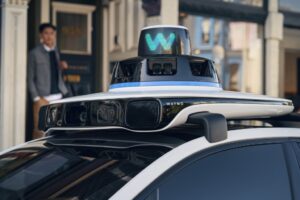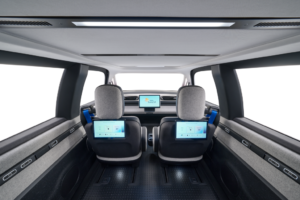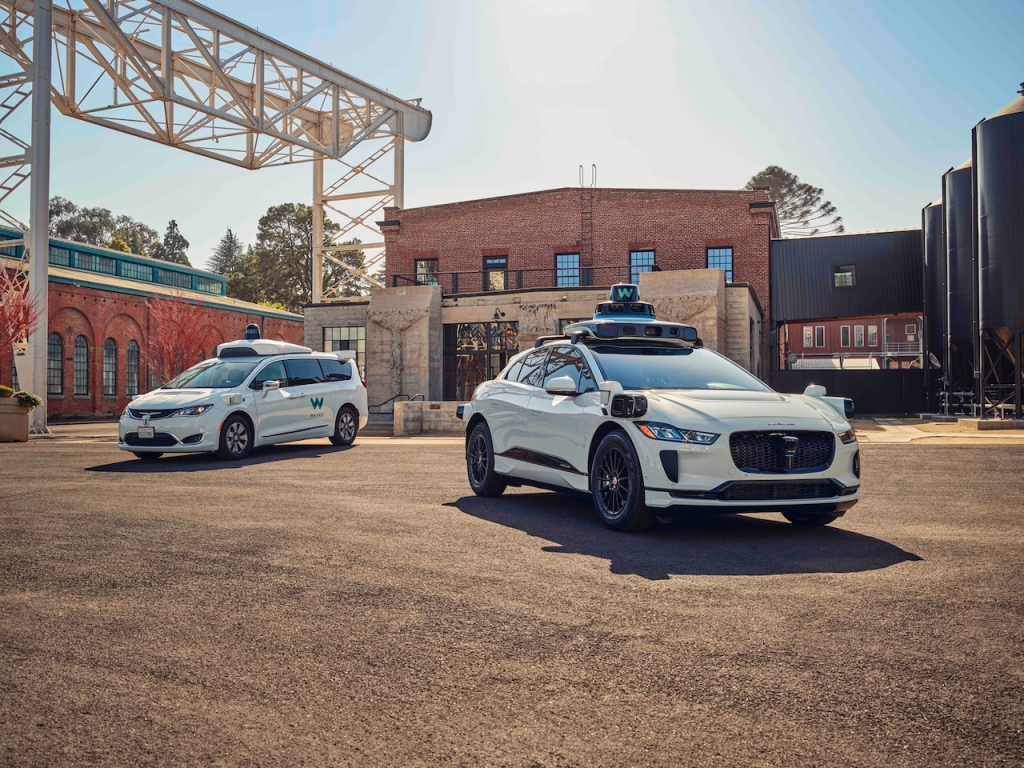Writer Shannon Severson // Photography Courtesy of Waymo



In 1941, author and illustrator John R. Neill’s book “The Scalawagons of Oz” told the fantastical story of how the Wizard of Oz invented self-driving cars for every citizen of that magical land. Phoenix may be a far cry from the Land of Oz, but the metro area is host to a grand experiment in autonomous vehicles: Waymo.
The company is based in San Francisco but chose the greater Phoenix metro area to launch its early rider program in the East Valley back in 2017 and rolled out the world’s first — and now the world’s largest — commercial autonomous ride-hailing service to the public in 2020. Other service areas include San Francisco, Los Angeles, and a test program in Austin, Texas.
Today, Waymo operates its all-electric fleet of Jaguar I-PACE vehicles across 225 square miles in the region, quadrupling its original test area. It now offers limited service at Sky Harbor Airport’s terminals 3 and 4, with expansion plans in the works. Travelers can take Waymo to and from the airport’s PHX Sky Train stations at 24th and 44th streets without restriction.
Kerry Brennan, a Phoenix-based product and customer research manager at Waymo, says Phoenix was chosen for its quickly growing, diverse population and its unique transportation needs, including college students, commuters, retirees and the population’s dependence on automobiles. The sunny weather is also a boon, though Waymo’s autonomous cars can now drive in monsoon rain.
“The Phoenix area offers everything we need to continue building safe and reliable autonomous driving technology,” Brennan says. “A large area with both broad suburban stretches and complex city streets, the Valley is also an innovation-focused region that shares our vision of improving mobility for all, so it was a natural fit for us to kick off our service here.”
Brennan points out that Waymo’s Phoenix electric vehicle fleet is powered by 100% renewable electricity and can deliver four times more zero-emission miles per year, per car. The company encourages people to combine their Waymo use with other sustainable modes of transit like walking, biking and public transportation. She says the company has even heard from riders that access to Waymo has allowed them to either get rid of their personal car or downsize to become a one-car family.
“We see Waymo (and our all-electric fleet) as providing an exciting option to further empower people looking for more sustainable mobility options,” she says. “In the Phoenix area, you can take Waymo to popular hikes like the Phoenix Mountain Preserve or [Camelback Mountain’s] Echo Canyon [Trail] and avoid dealing with limited parking or a hot car.”



Catch a (Self-Driving) Cab
Riders start by downloading the app within the service area. Pickup and destination points are entered, and the user is shown the price and duration of the ride as well as how long they can expect to wait for the vehicle’s arrival. Prices are comparable to other ride-sharing services like Uber or Lyft — albeit without the need to tip a driver — and costs increase during periods of high demand.
Another difference: Waymos currently use only surface streets, not freeways, so that should be factored into expected travel time. That said, Waymo is operating fully autonomously on Phoenix freeways and intends to expand its freeway service to Phoenix riders in the future.
The Waymo arrives with the rider’s initials displayed on a small screen atop the roof of the car. The app is used to unlock the car and pop the trunk, if needed. Hop inside, and a calming voice greets the rider by name with encouragement to fasten seatbelts and enjoy the ride. A touchscreen allows riders to play music, see representations of vehicles, bicycles and pedestrians around them, request a speedy pullover or contact Waymo support if needed.
It’s important to note that Waymo rides don’t guarantee exact pickup and drop-off points. The app will display an approximate location where riders should stand and wait for the vehicle but users may need to walk around searching for where the carhas deemed to be a safe area to pull over. This is especially relevant in locations like shopping centers or crowded downtown streets. The same fluctuation applies when the ride concludes. These aspects are part of participating as a tech “pioneer” as the product is continually being improved.
Brennan says the response has been overwhelmingly positive, and riders quickly become comfortable and enjoy having the car to themselves to take phone calls, interact with their friends, or listen to their favorite music.
“Like any new technology, some people are naturally skeptical about what they haven’t yet experienced,” Brennan says. “Our research shows as more people are exposed to the technology — whether that means seeing the Waymo vehicles driving safely alongside them on the road or taking a ride themselves — acceptance continues to increase.”



Fast Lane to the Future
Brennan says Waymo will continue to take a deliberate, methodical approach to expanding its capabilities within current service areas without compromising local needs, with an eye toward making a positive impact on local transportation infrastructure and mobility. The company is also looking to test new markets in a “thoughtful and meaningful way.”
At the top of Waymo’s priority list is safety. The company’s fleet has now logged millions of miles on public roads, with data showing that the Waymo driver is significantly safer than human drivers.
This combination of efficiency, availability, public buy-in and sustainability will certainly continue to change the way Phoenix residents get around town and perhaps even the physical landscape of its neighborhoods.
“The average personal vehicle is parked 95% of the time. We hope that Waymo can help more people feel like they don’t have to own a car in order to get comfortably where they want to go. And with less need for parking, we’d love to see more shade trees around town in its place.”







Comments by Admin